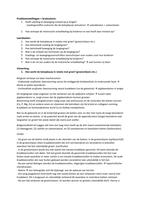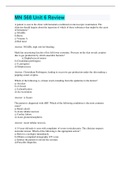Samenvatting
Summary Branding (6314M0157Y)
- Instelling
- Universiteit Van Amsterdam (UvA)
Full summary of all the relevant and necessary articles for the Course Branding Exam for the University of Amsterdam (UvA) for the Master (MSC) Business Administration (MBA). The course was given by Roger Pruppers and Hendrik de With in 2023.
[Meer zien]













